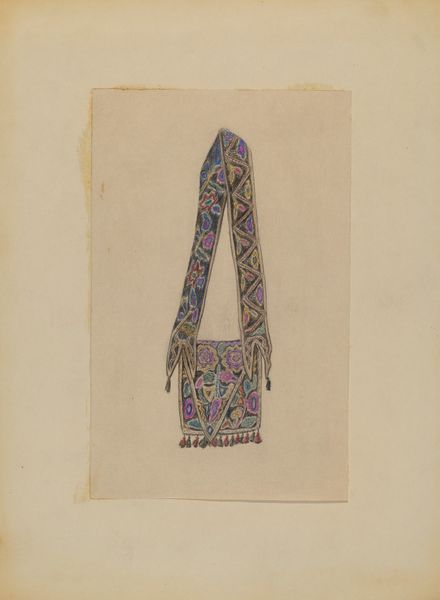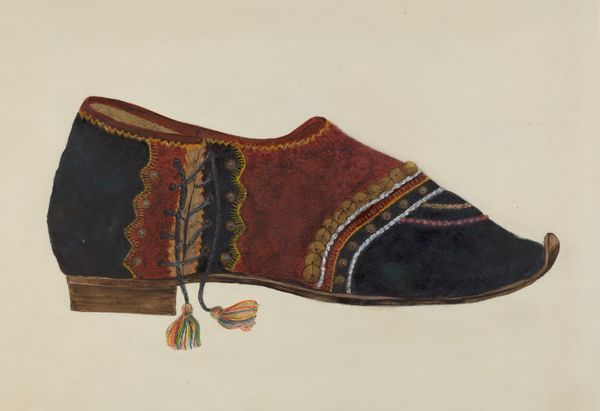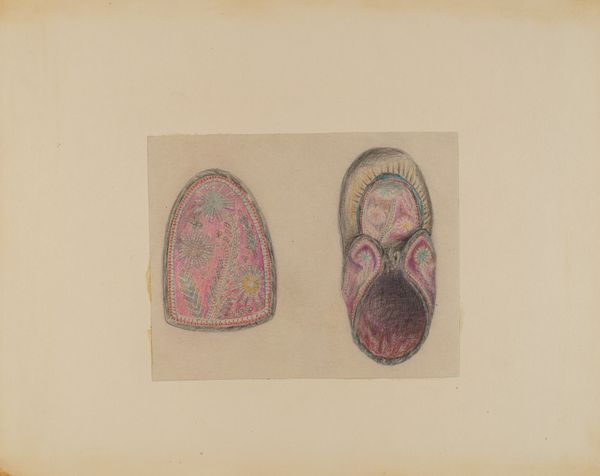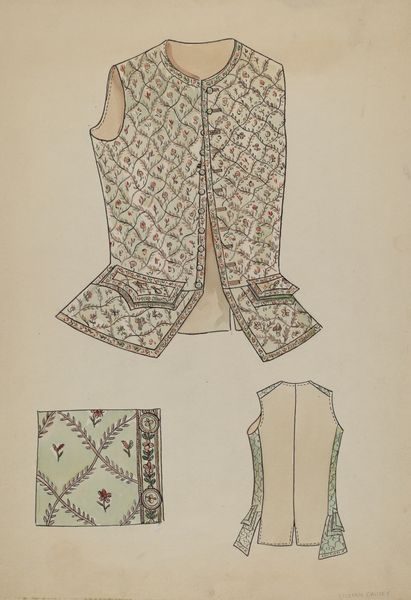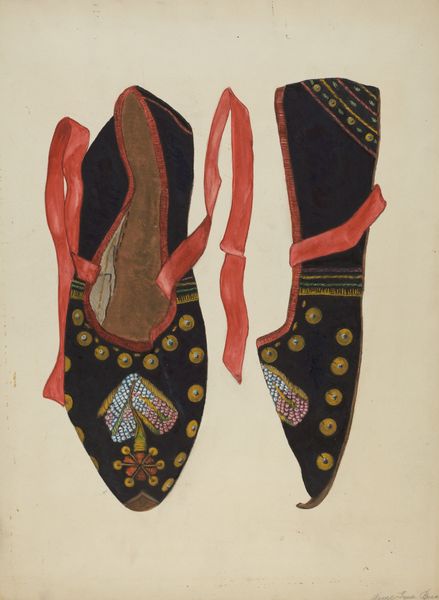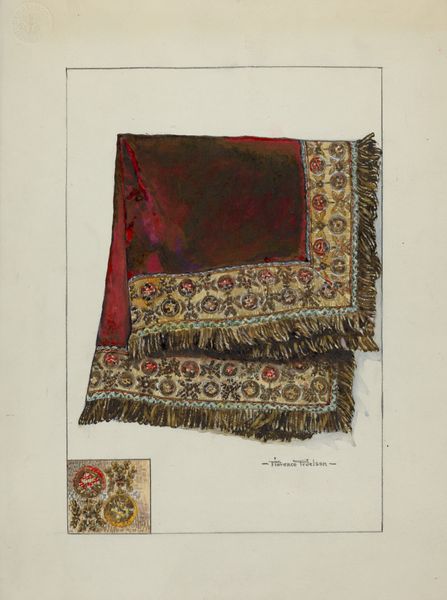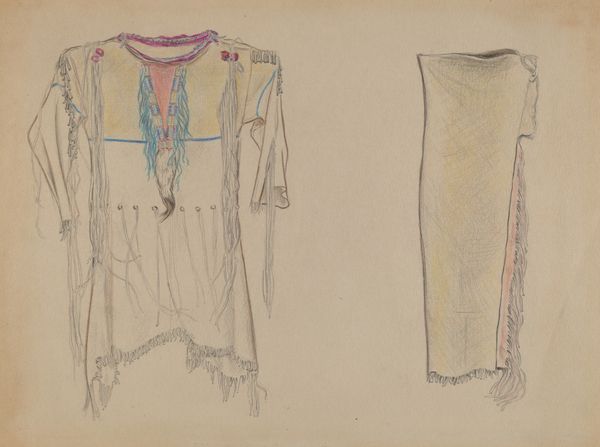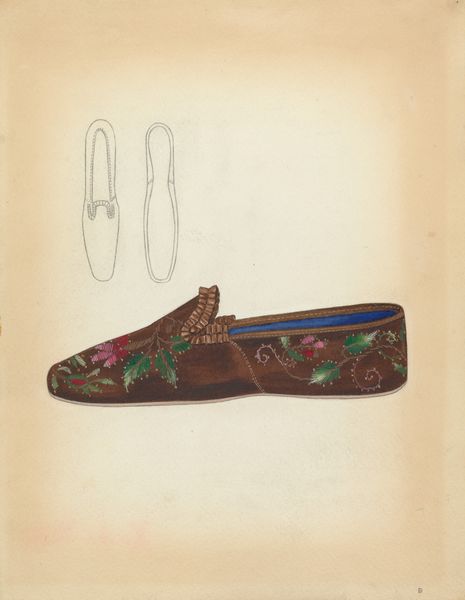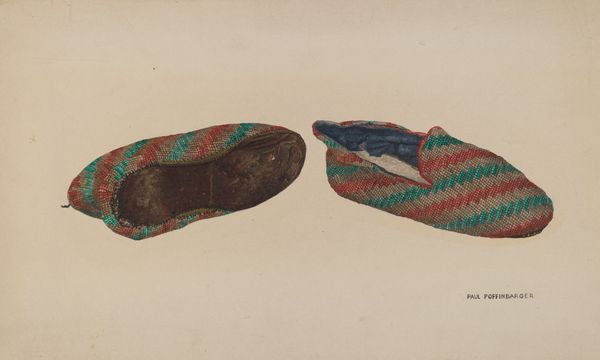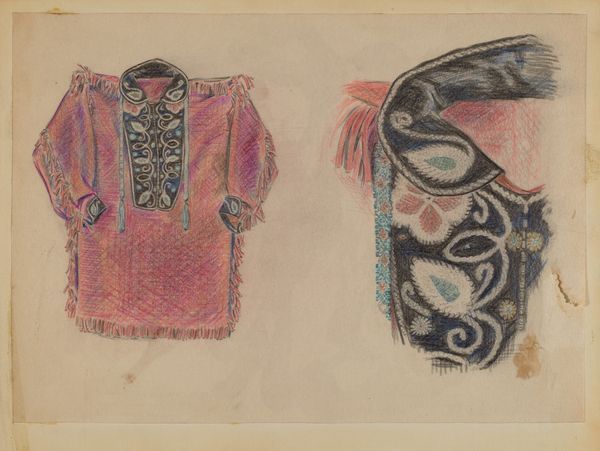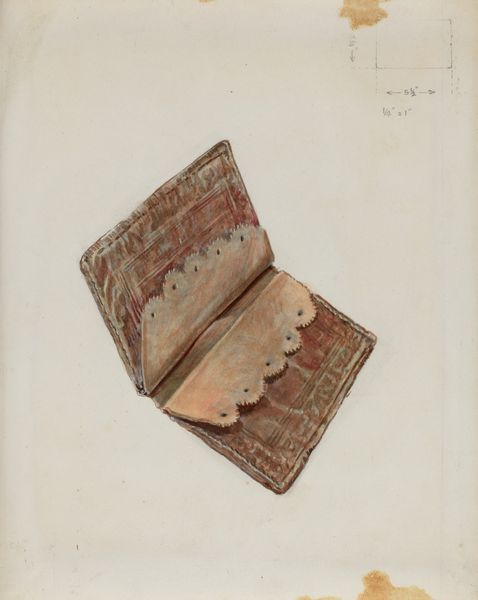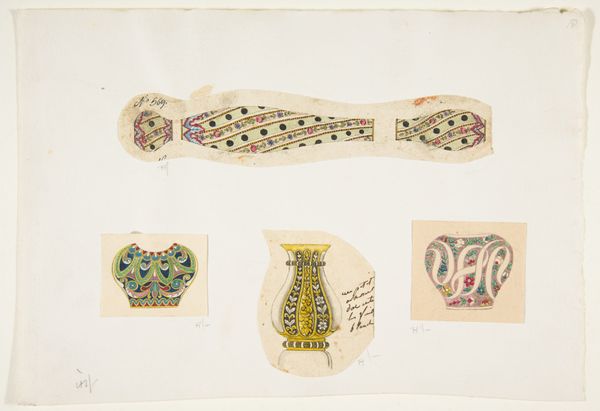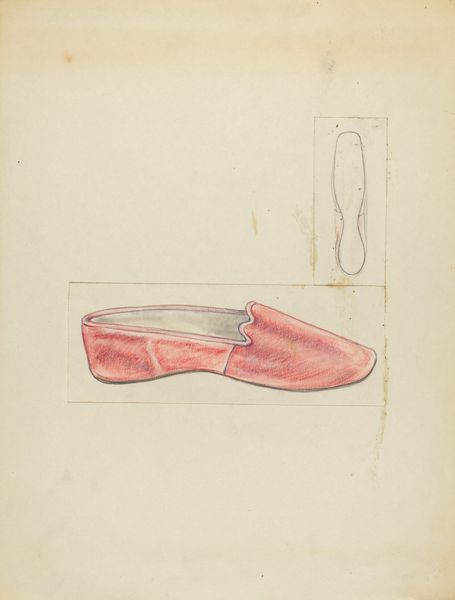
drawing, coloured-pencil, paper, pencil
#
drawing
#
coloured-pencil
#
paper
#
coloured pencil
#
pencil
#
watercolor
Dimensions: overall: 22 x 29.4 cm (8 11/16 x 11 9/16 in.)
Copyright: National Gallery of Art: CC0 1.0
Curator: Look at the colors! A quiet vibrancy… what jumps out at you first? Editor: The, oh, almost humble intimacy of it. Two objects rendered with a tender, observant hand, bathed in a muted palette, a curious snapshot, would you say, that offers a tangible sense of lives lived close to the earth? Curator: Precisely. What we have here is a colored pencil drawing from 1935 entitled “Moccasin,” created by Mary Berner. What I find immediately compelling are the symbols and design motifs adorning both the slipper and breechclout; designs that clearly possess a history. Editor: It makes me wonder about storytelling and legacy, you know? This feels like preserving something very fragile – a whisper of culture across generations. I love the almost scientific way it’s presented, but the little imperfections make it feel so real, like holding someone's memory in your hand. Curator: The artwork speaks to Indigenous presence and persistence within a specific historical moment. Note that the artwork contains the label, "Penobscot Tribe," for the depicted cultural items: Moccasin, Breechclout. The cultural memory, preserved in the design details and Berner's realistic rendering, serves as evidence of tradition during the 1930s. Editor: So, it is a visual record – proof. That breathes into it something of… resistance? A quiet ‘we were here, we *are* here.’ Even the material choice—colored pencil— it's like a deliberate act to translate such rich embroidery in soft and approachable strokes, humanizing it all. Curator: A beautiful observation. And that is part of the power of the images from this movement— the blending of artistry with this drive to not be forgotten. The image encapsulates that resilience in design details and the softness in color pencils, offering not just beauty but this enduring message of perseverance. Editor: That is an extraordinary point. I find myself wanting to see these not as ethnographic records, but to experience the emotional texture of their lives – these beautifully preserved, incredibly crafted objects becoming portals to empathy and understanding. Curator: Ultimately, “Moccasin” challenges us to look beyond surface representation and engage with cultural inheritance, reflecting on shared and lived experiences. Editor: Well, I certainly see those slipper and breechclout in a completely new, brighter, more layered light. Thanks for walking me through the artwork’s intriguing dimensions.
Comments
No comments
Be the first to comment and join the conversation on the ultimate creative platform.
